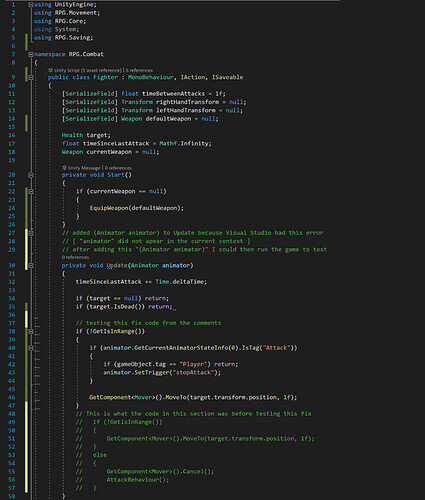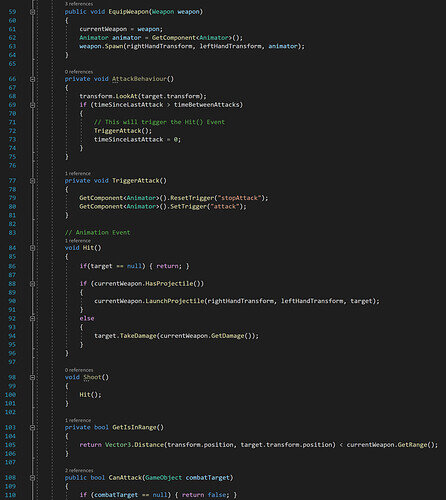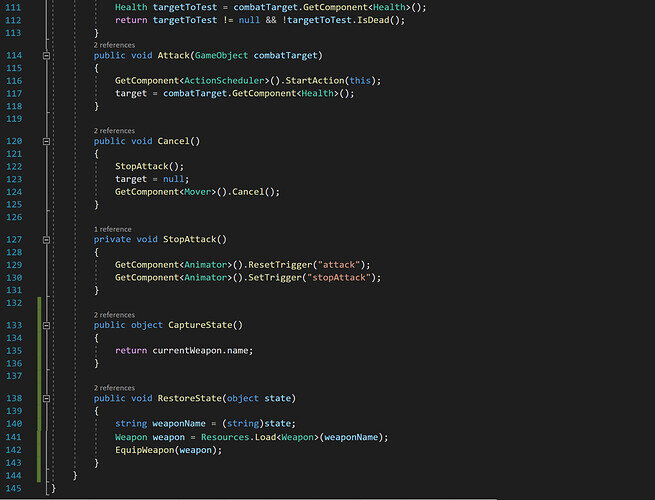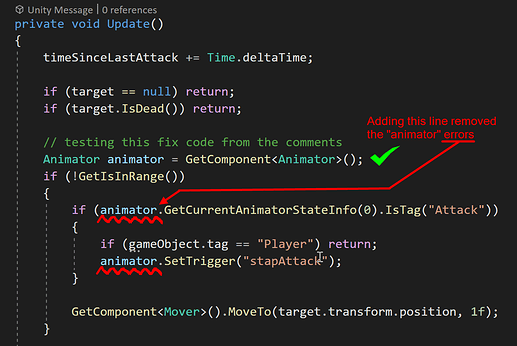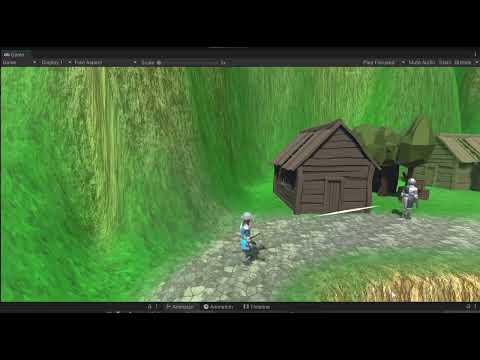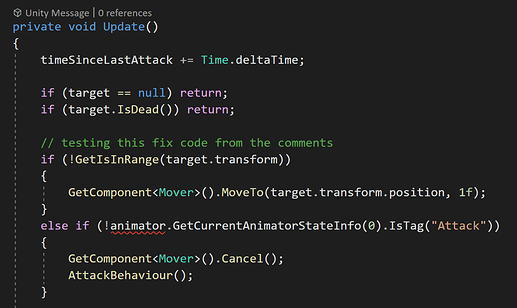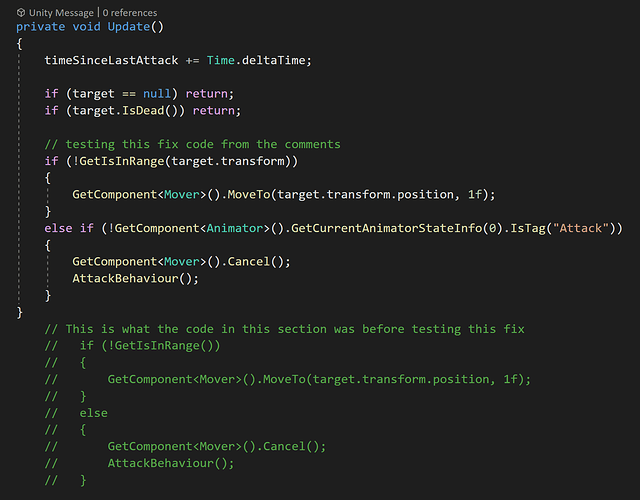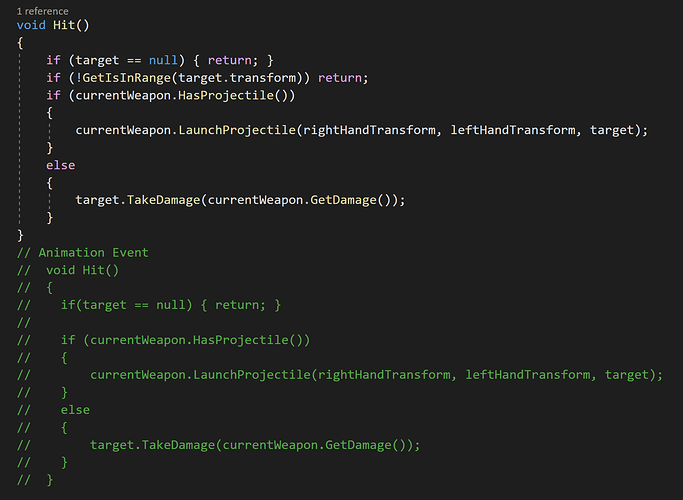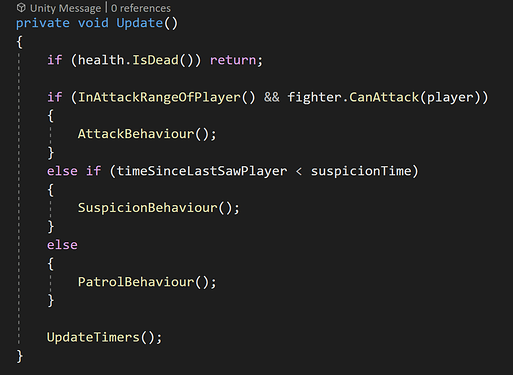I saw this issue in the comments here
" Player “jittering” when shooting moving enemies " from Nov 21/2021
Under the “Pickup Respawning” video section in the “Simple Weapons” sub-section of the “Unity RPG Core Combat Creator: Learn Intermediate C# Coding” course.
In this comment, I saw the user was having the same issue I was having. The player will “jitter and/or stutter step” while shooting the bow at an enemy that is walking away from them at the bow weapons max range. The video in this comment shows the exact issue in action.
Their post doesn’t state what script they were changing their code in, but I think it was in the Fighter.cs script. And I had to edit the code to get it to at least run, but now I am receiving an error I don’t know how to fix.
I can no longer target and attack enemies and they can’t attack the player either, because of this error.
The other user was able to fix this issue and attached a snippet of the code in their post to help others who had the same issue, but their solution doesn’t seem to be working for me. I’m going to attach the whole script here as that might be better to help everyone.
Can anyone help resolve the Script Error Issue I’m getting?
Thank you so much everyone. 



